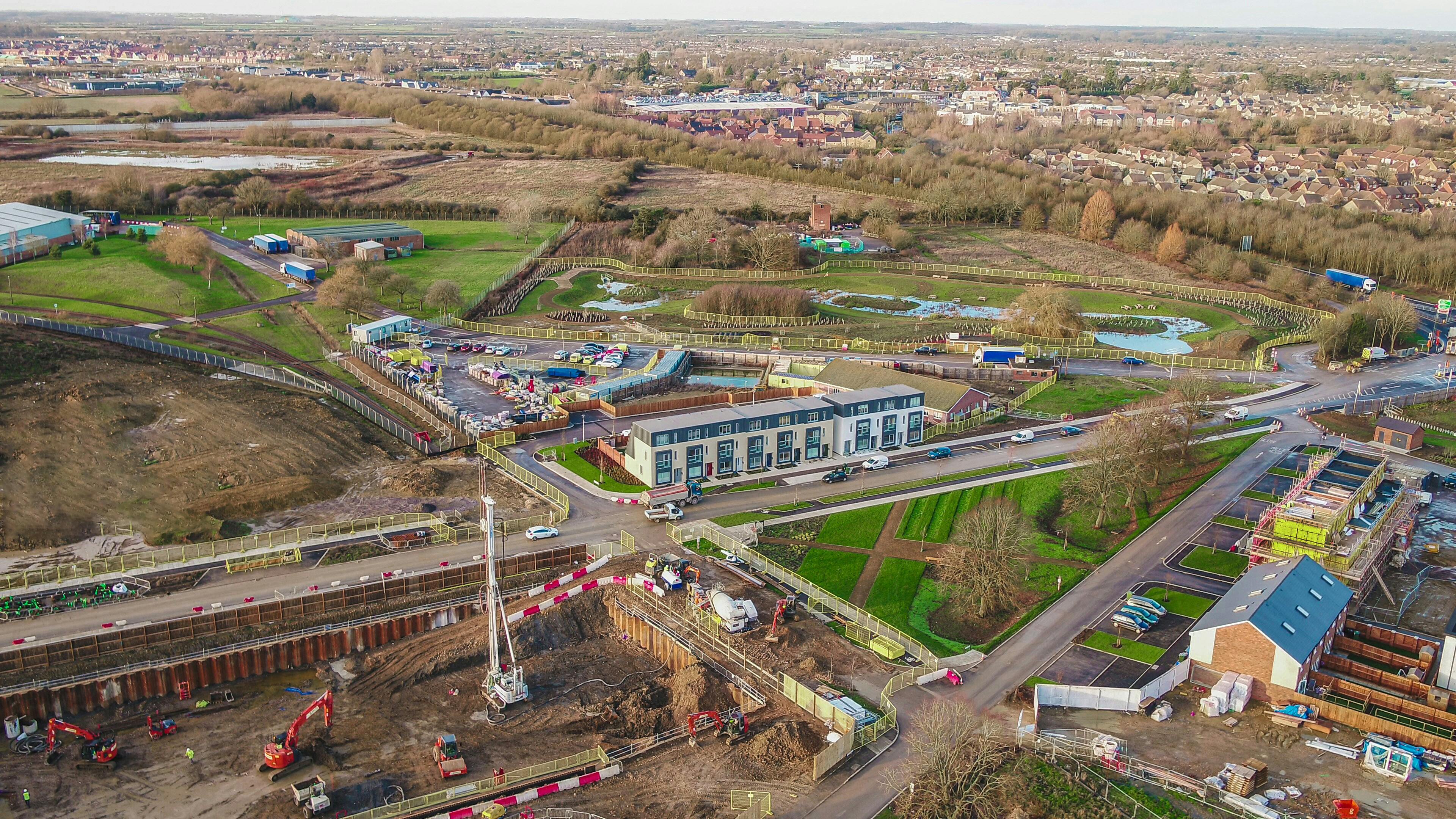
Graven Hill
Careys were principal contractor on the Graven Hill project, delivering various construction and civil engineering packages of works at Europe’s largest self-build development
Client
Graven Hill Village Development CompanyLocation
BicesterPrincipal Contractor
CareysAfter serving as a Ministry of Defence (MoD) facility – which played a key role in the Second World War and beyond – the 82-acre Graven Hill site, which is located on the outskirts of Bicester in Oxfordshire, was transformed into a thriving residential scheme that includes 1,400 homes – as well as a collection of retail and entertainment structures.
The Graven Hill Village Development Company engaged Careys as principal contractor for Phase 0 of the project. The central purpose of this initial stage of the development – which took place before the bulk of the main works began – was to showcase the buildability of the scheme, as well as to identify and devise solutions for any potential construction-related issues.
During Phase 0, we constructed the infrastructure and foundations for the first 10 self-build homes and 10 show homes on the site. We also provided landscaping and extended an access road. After successfully helping to inaugurate the Graven Hill scheme with Phase 0 – which proved the viability of the project – we went on to win the contracts for Phase 1A and Phase 1B.
Phase 1A – helping to create a thriving community
Phase 1A – helping to create a thriving community
Phase 1A involved the construction of 30,000m2 of new carriageway, 300,000m3 of earthworks and a balancing pond. We also installed 240 manholes, 16km of drainage and 22,000m2 of varying surface finishes.
Additionally, as part of this phase of the project, we were responsible for the completion of landscape transformation works at the site, which included the design and build of varying types of roads, the installation of street furniture and lighting, and a £1m contract to construct woodland play areas, ponds, viewing decks, boardwalks and bridges.
As part of our value engineering works on Phase 1A, we tested multiple sections of the route to determine the most cost-effective use of construction materials. Based on our findings, we decided it was more cost-effective and sustainable to use engineered fill, rather than importing 39,000m3 of quarried material.
Phase 1B and an extra contract – Careys’ continued contribution to Graven Hill’s construction
Phase 1B and an extra contract – Careys’ continued contribution to Graven Hill’s construction
As a result of our successful work on Phase 1A, we were awarded the contract for Phase 1B, which called for, among other tasks, the construction of additional house foundations. The works we completed in Phases 1A and 1B contributed to the growth of what is shaping up to be a vibrant community.
On the strength of our previous successful efforts on the Graven Hill project – we won an additional contract to construct the basement and concrete works for a mixed use apartment block that will feature residences and retail establishments.
In keeping with Careys’ ongoing commitment to protect the environment and promote sustainability, we implemented a range of robust wildlife protection measures. These included the creation of an ecologically sensitive tree clearance programme, which was scheduled to take place between the end of one nesting season and the start of the next, and the safe transfer of a range of wildlife, such as colonies of bats, owls and newts, from the site to new homes in another suitable habitat.
We were also able to process waste timber from the site and have it resold onwards, to be used as fuel to generate electricity from a biomass power scheme.
Largest iron-age village discovered on-site
Largest iron-age village discovered on-site
During Phase 1A, evidence of an iron-age settlement was discovered on the site of the future village green. Because of the importance of this find – it turned out to be the largest iron age village ever seen to date in the UK – teams of archaeologists, including from nearby Oxford University, came to the site to examine evidence and collect artefacts.
In the end, although this important discovery caused a delay on the project, it added valuable knowledge about how societies lived in this region thousands of years ago. Once the site was reopened, we got back up and running quickly and smoothly – helping to construct a contemporary community in the same spot that the Iron Age Britons had once called home.
Thorough preparation overcame obstacles and provided solutions
While planning logistics for the project, we realised that the site’s close proximity to St. David’s – the active MoD facility that serves the main barracks of the Royal Logistical Corp – might present potential complications, as it would mean that MoD personnel would need to regularly use the area around the site.
In response, we devised and put in place a careful stakeholder management system, which enabled us to mitigate risks and ensure that the situation would be handled as sensitively and carefully as possible. This allowed us to carry out works without disrupting base operations.
We'd love to hear from you, so please get in touch